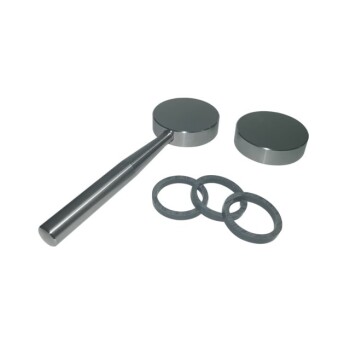XRF (X-ray fluorescence) analyzers are sophisticated instruments used for non-destructive elemental analysis of materials.
These devices can identify and quantify elements ranging from magnesium (Mg) to uranium (U).
They provide immediate, lab-quality results on-site.
The technology is widely used across various industries due to its speed, accuracy, and ease of use.
This makes it an indispensable tool for material verification, environmental assessments, and more.
5 Key Points Explained: What Does an XRF Analyzer Do?

1. Definition and Function of XRF Analyzers
XRF Stands For: X-ray fluorescence.
Function: Non-destructive, non-invasive technique for elemental and material analysis.
Capabilities: Measures elements from magnesium (Mg) to uranium (U) at concentrations from parts per million (ppm) to 100%.
2. Types of XRF Analyzers
Handheld XRF Analyzers: Portable devices that provide immediate, lab-quality results at the point of inspection.
Benchtop XRF Analyzers: Stationary models used in laboratories for more detailed and comprehensive analysis.
3. How XRF Analyzers Work
Emission: The analyzer emits X-rays.
Excitation: X-rays strike the sample, causing it to fluoresce and emit secondary X-rays.
Measurement: The detector measures the energy spectrum of the returning X-rays, identifying and quantifying the elements present.
Mathematical Operations: The analyzer processes the data to generate a result.
4. Range of Elements Analyzed
Elemental Range: Typically from sodium (Na) to uranium (U).
Detection Levels: Vary depending on the availability of orbitals to which excited electrons can move.
5. Applications of XRF Analyzers
Material Verification: Ensuring the composition of materials meets specified standards.
Scrap Recycling: Identifying alloys and metals for efficient recycling processes.
Mining and Geochemistry: Analyzing mineral content and environmental samples.
Environmental Assessments: Testing for contaminants in soil, water, and air.
Education and Research: Providing hands-on learning and data for scientific studies.
Regulatory and Safety Screening: Ensuring compliance with safety and environmental regulations.
Precious Metals Analysis: Assessing the purity of gold, silver, and other precious metals.
6. Advantages of XRF Analyzers
Non-Destructive: Preserves the integrity of the sample.
Speed: Provides immediate results, saving time and resources.
Accuracy: Delivers lab-quality analysis on-site.
Ease of Use: Simple operation with minimal maintenance.
Versatility: Applicable across multiple industries and fields.
7. Safety Considerations
X-ray Safety: Avoid pointing the analyzer at people or sensitive areas to prevent exposure to X-rays.
8. Calibration of XRF Analyzers
Need for Calibration: Regular calibration ensures accurate and reliable results.
In conclusion, XRF analyzers are essential tools for elemental analysis.
They offer a combination of speed, accuracy, and ease of use.
Their non-destructive nature and immediate results make them invaluable in various industries.
Understanding the capabilities and applications of XRF analyzers can help lab equipment purchasers make informed decisions.
This ensures they select the right tool for their specific needs.
Continue exploring, consult our experts
Discover the power of XRF analyzers and transform your analysis capabilities with KINTEK SOLUTION's top-tier equipment.
From material verification to environmental screenings, our analyzers deliver immediate, lab-quality results on-site.
Unmatched accuracy, ease of use, and safety—let our cutting-edge XRF technology elevate your operations.
Don't miss the chance to optimize your workflow. Contact KINTEK SOLUTION today and take your analytical testing to new heights.










